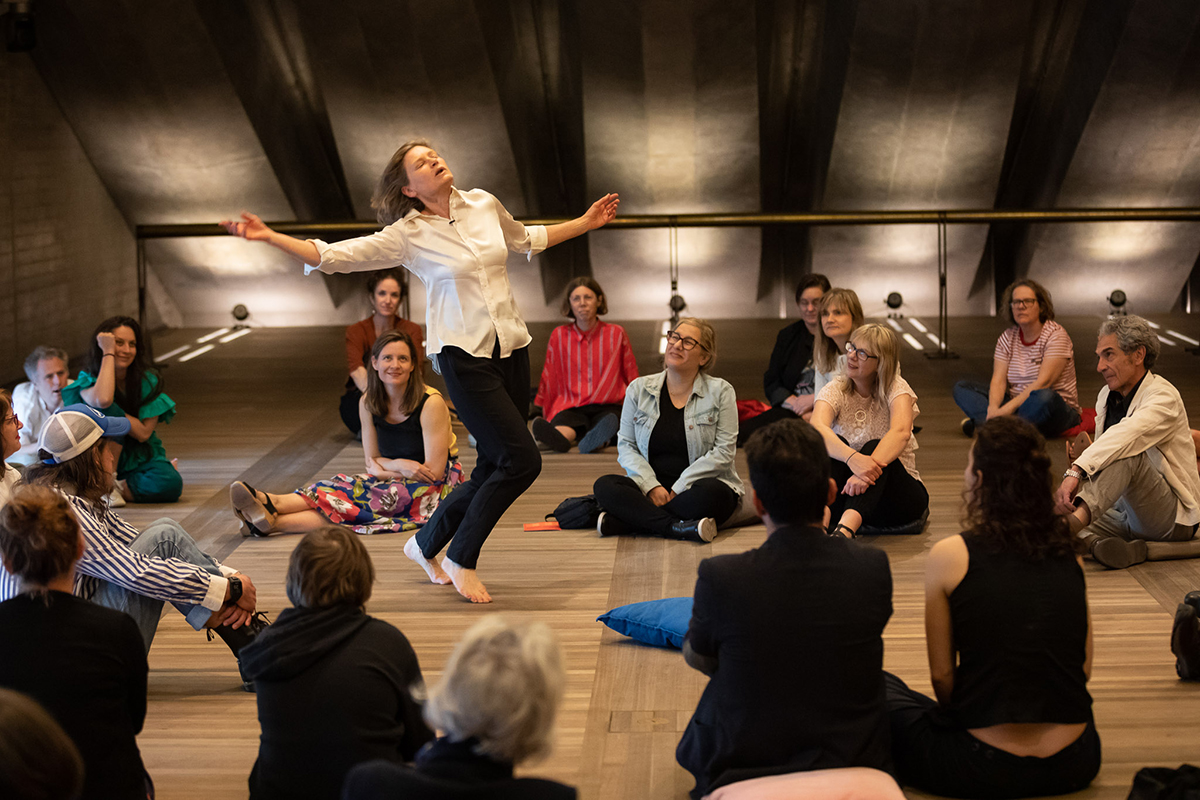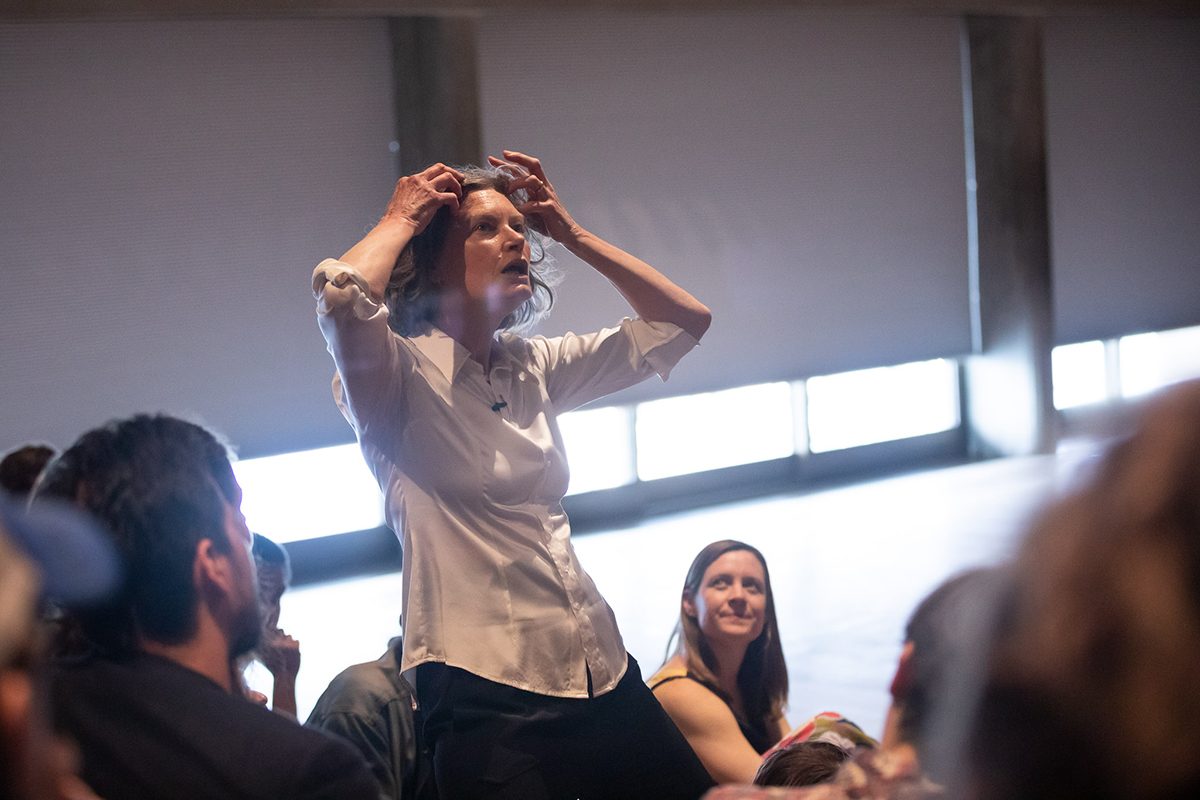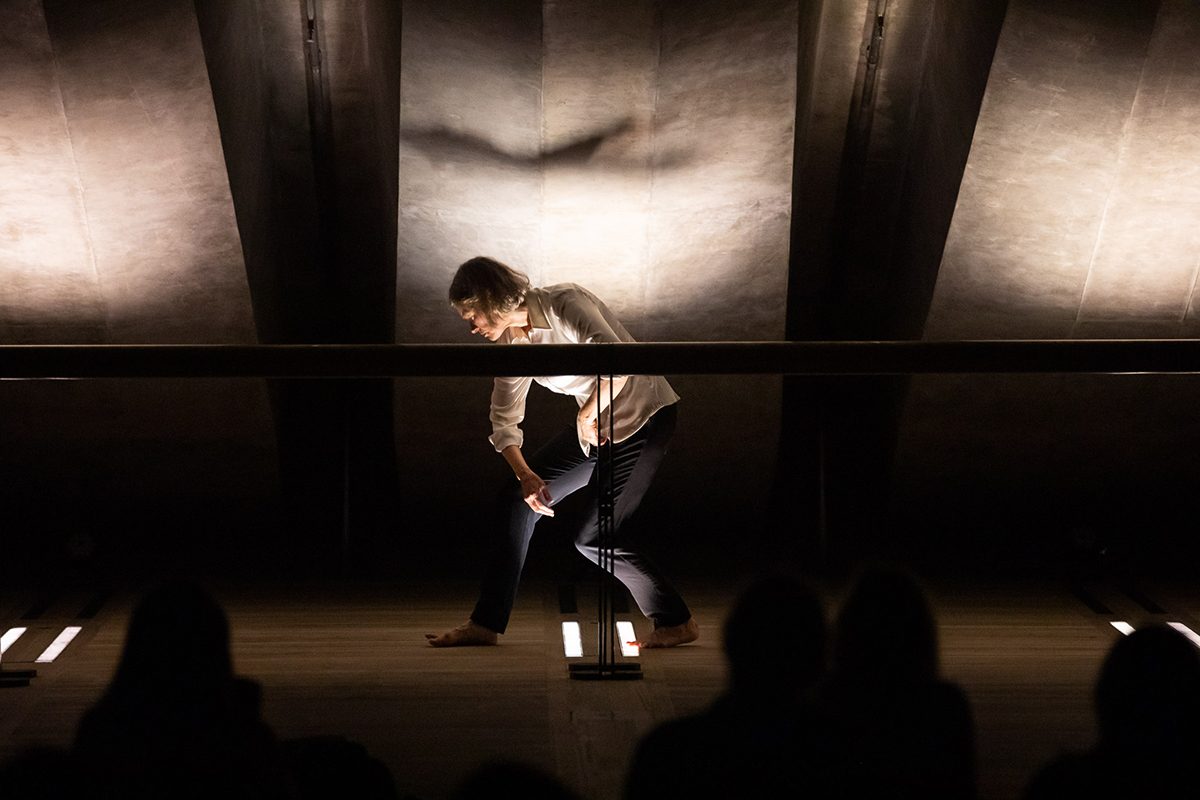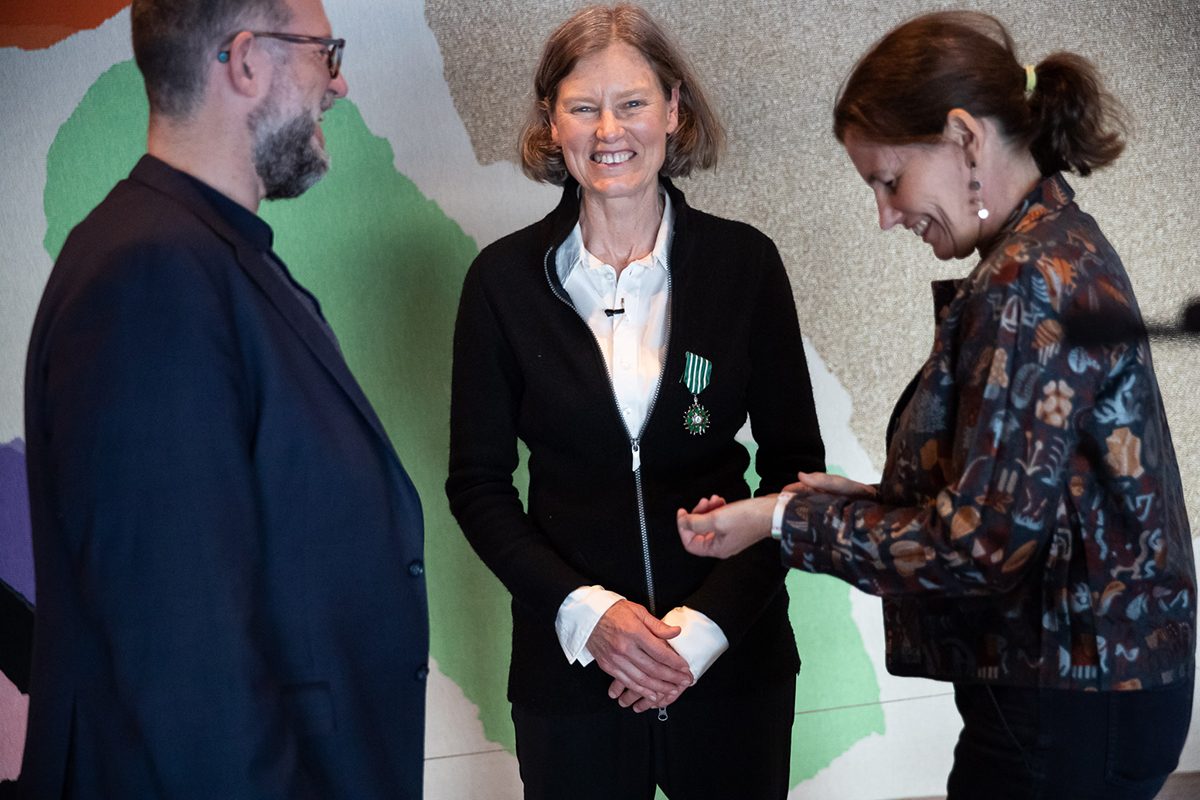
Rosalind Crisp’s environmental site-dance
Dancers are space-makers—generators of dimension, ‘drawing’ with bodies in motion felt lines of containment and expansion, wherever they might be performing. They are equally transformers—redelineators of stages, galleries and public spaces. In DIRtywork in the Sydney Opera House’s Utzon Room, Rosalind Crisp guides us through an estimation of the room’s architectural beauty but also the sheer weight of the environmental damage each element of its construction represents. Answering to a challenge she has set herself—how to make dance amid ongoing environmental destruction—the performance is autobiographically framed, inextricably melding personal and political, body of the dancer and body of the room. With wisdom and wit and a supple entwining of dance and word Crisp gives site-specificity a new vigour.
An initial dance in silence on the open floor thrills with recognition (it’s been a long time for me between Crisp’s dancing in Sydney)—the particularity of the body, its lightness, fluency, acute shaping and control, sudden weight and unnerving unpredictability: which way will Crisp’s body take her in moments of delicate suspension, on vertiginous tipping edges and in sudden leaps and turns?
After casually recounting family history—dissident Irish settlers arriving in rural Victoria in 1829, farming merino sheep, and her own return to the property in 2013—and stating the challenge the work represents—Crisp sits among us, sinking into herself, head down, murmuring, the breath voiced, random utterances in English and French that indicate what action her body is taking and what thoughts transpire: “a little pocket of Australia, keeping it for myself.” Straightening up, she moves back onto the floor, inviting us to stretch out and regard the remarkable, metre-wide concrete veins that rush the length of the room and dive, curving into the floor at the far end.
This engrossing guided tour of the room draws on research into the construction of the Sydney Opera House and species decimation in Australia. The concrete’s sand-fed beauty belies the loss of beaches. The hanging that graces the length of the western wall was made by the Victorian Tapestry Workshop from the wool of merino flocks that fed on high protein grasses that supplanted native ones, now 97% destroyed, Crisp says (to which we can add 30 hectares of the remainder illegally poisoned by Government Minister Angus Taylor’s family company. ED). Crisp punctuates her delivery with short bursts of movement, some recalling the opening dance. She tells us the floor is Southern Bluegum, much plundered and, with it, food for the Swift Parrot. She drolly turns on herself—her Murray-Darling-depleting cotton pants, a Turkish silk shirt (but great to move in), her soybean-fuelled calves and her oat-fed thighs. “The trouble with dance is that it sucks up so much water.” She wonders should she move less.
A video of Crisp, slowly writhing on the ugly detritus of logging in the ancient alpine forest where she grew up and which is almost gone, preludes a final dance in which she moves to the southern end of the room. She is now a shadowy figure, still and at one with the architecture and then flowing out of it in an ambivalent meeting of artforms and a painfully lyrical embodiment of the many contradictions she has revealed and which we are living out every day. “Without contraries there is no progress,” wrote William Blake; Crisp brought them to bear on us in a wryly intimate performance that changed my perception of the Utzon Room, transforming it for the duration and beyond into Australia from the Murray-Darling to the Snowy to East Gippsland, to species depleted and extinct and, within it, our deeply implicated bodies.
Rosalind Crisp, Chevalier de l’Ordre des Arts et Lettres
Rosalind Crisp was invited in 2003 to Paris by Michel Caserta, director of the Biennale nationale de danse du Val-de-Marne (2004 to 2012). In 2004 she became the first choreographic associate of Atelier de Paris-Carolyn Carlson. The Atelier managed and toured her French company for 10 years. In 2016 the French Ministry of Culture awarded her a Chevalier de l’Ordre des Arts et Lettres (Dame of the Arts) for her decade-long contribution to dance in France. The investiture, by Anne Boillon, French Consul in Sydney, with Cultural Attaché Philippe Platel, was witnessed by family, friends and fellow artists and took place immediately after the first DIRtywork performance in the Utzon Room.
DIRt
“DIRt (Dance in Regional disaster zones) is an ongoing research project with artists and ecologists, based in Orbost, East Gippsland, Victoria. We ask how dance and collaborative arts practice might embody, understand and connect to our deepening environmental crisis. The core group is myself, Vic McEwan, Andrew Morrish and Peter Fraser.” Rosalind Crisp, interview, UnWrapped program. See omeodance.com/dirt.
–
Sydney Opera House, UnWrapped: DIRtywork, creator, performer Rosalind Crisp; Utzon Room, Sydney Opera House, 15 Sept
Top image credit: Rosalind Crisp, DIRTywork, UnWrapped, Sydney Opera House, photo Daniel Boud









